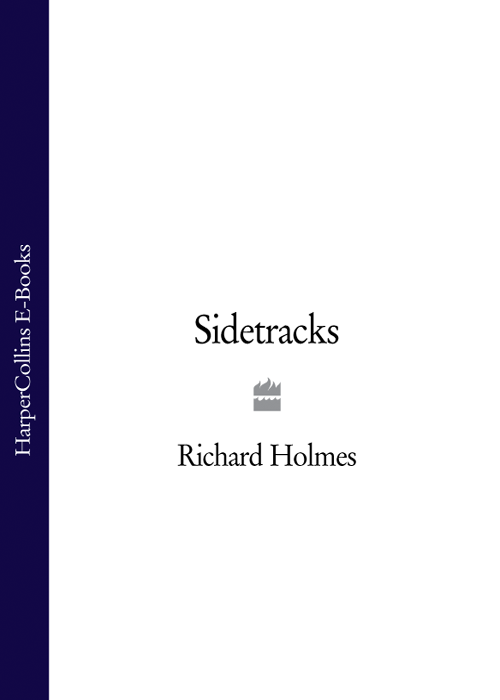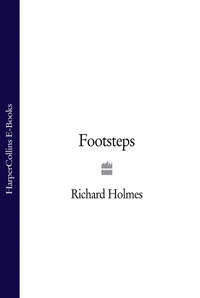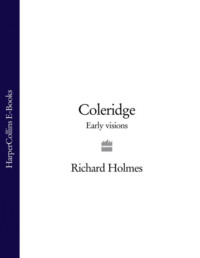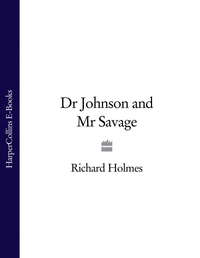
Полная версия
Sidetracks


SIDETRACKS
EXPLORATIONS OF
A ROMANTIC BIOGRAPHER
RICHARD HOLMES

To my old friend and adviser
Peter Janson-Smith
through thick and beastly thin
Contents
Cover
Title Page
Prologue
I A Romantic Premonition
Introduction
Thomas Chatterton
II Lost in France
Introduction
Monsieur Nadar
Gautier In London
Poor Pierrot
Inside The Tower
III Five Gothic Shadows
Introduction
The Singular Affair Of The Reverend Mr Barham
The Reverend Maturin And Mr Melmoth
M. R. James And Others
John Stuart Mill
Lord Lisle And The Tudor Nixon Tapes
IV A Philosophical Love Story
Introduction
The Feminist And The Philosopher: A Love Story
V Shelley’s Ghost
Introduction
Scrope’s Last Throw
To The Tempest Given
VI Escapes to Paris
Introduction
Scott And Zelda: One Last Trip
A Summer With The Novelist
Letters From Paris
Voltaire’s Grin
VII Homage to the Godfather
Introduction
Boswell’s Bicentenary
Boswell Among The Tulips
Dr Johnson’s First Cat
Acknowledgements
Index
About the Author
Also By Richard Holmes
Praise
Copyright
About the Publisher
Prologue
WE WERE AT a café table, under the plane trees, far in the south, with the evening light flowing away down the river. I was asking the beloved novelist those old, fascinating questions: How do you find your stories? Where do your ideas come from? When she said, with that sudden challenging smile of hers: ‘But how do you find your subjects; where do they come from?’ And I answered almost without thinking, between two mouthfuls of the cold white wine: ‘Down many sidetracks.’ She laughed and looked out into the gathering dark. ‘I think you’d better explain that,’ she said. So I have tried.
This book is my attempt to explore – as well as to explain – something of these mysterious biographical pathways. (I love the French word sentier for a track, because it also hints at the notion of a line of smell or perfume, as in ‘on the scent’.) It is a biographer’s collection of short pieces, rather like a novelist’s collection of short stories, but it has a theme and purpose. It is the fragmented tale of a single biographical quest, a thirty-year journey in search of the perfect Romantic subject, and the form to fit it. It is my personal casebook.
For me biography has always been a personal adventure of exploration and pursuit, a tracking. It is uncertain in its beginning, when even the first outline of a glimpsed subject may change into someone else, or become a minor role in another life, or simply fade away into the historical undergrowth. It is tantalizing in its final destination, when a completed biography invariably leaves so much else to be discovered, sometimes by other means. It is often surprising in retrospect, when previously hidden perspectives and retrospectives emerge. I conclude that no biography is ever definitive, because that is not the nature of such journeys, nor of the human heart which is their territory. Sometimes all one achieves is another point of departure. Such are the shifting themes of this collection.
Looking back I see, rather to my surprise, that I have written (or failed to write) one biography about every three or four years. This seems to be a languid, circadian rhythm that comes quite naturally to me. But during that slow, ruminative period of researching, travelling, dreaming and writing (which go on simultaneously), the journey also spreads out in many unexpected directions. It produces a great deal of material that, for one reason or another, never gets into the final book; or else erupts later as a kind of after-shock or aftermath. I suspect many biographers experience this.
Yet these wanderings from the main path, these seductive sidetracks over another part of the hill, are often the places where I have learned most about my subjects and have felt most free in their company. They also tell something about how a particular biography was brought to life. As Shakespeare’s Polonius put it (a very fond and foolish old fellow), ‘by indirections find directions out’.
So this book is organized, like a series of traveller’s tales or informal route-maps, around the main biographical voyages I have taken over the last thirty years. All of them concern more or less Romantic themes; some of them actually produced books; others signally failed to do so – and these I am particularly attached to. I think it is sometimes supposed that biographers advance steadily and relentlessly from publication to publication, along a kind of well-signed literary motorway. Perhaps some of them do; but I am more of a rambler and botanizer myself. As a matter of record, here is a list of my major biographical subjects, with their results in brackets.
1969–70: Chatterton (an essay, no biography) 1971–74: Shelley (a biography, Shelley: The Pursuit) 1973–79: A Gothic Victorian (many sketches, no biography) 1975–79: Gautier and Nerval (sketches, translations, unpublished biography) 1979–80: Scott and Zelda Fitzgerald (a single sketch) 1980–85: A Romantic Traveller (sketches, finally Footsteps) 1986–87: William Godwin and Mary Wollstonecraft (an essay, no biography) 1982–89: Coleridge (half a biography, Coleridge: Early Visions) 1990–94: Johnson (a fragment of biography, Dr Johnson & Mr Savage) 1994–98: Coleridge (second half of a biography, Coleridge: Darker Reflections) 1999 … A Runaway Life (but that could go anywhere)The sidetracks that arose from these main expeditions take several, perhaps surprising forms. For I am fascinated by the many different ways in which a ‘true story’ can be told. Why should the biographer be limited to one kind of narrative voice, one kind of discursive prose? So they include two radio-plays, several travel pieces, a large number of character-sketches, some autobiographical fragments, some formal essays, and a very informal short story for BBC Radio Four’s ‘Book at Bedtime’. All of them were written as different ways of investigating biographical material: to see how far certain hints and possibilities could be taken down the path, explored and relished.
It is this love of imaginative displacement, of seeking and snuffling on the trail of another life, so essential to literary biography, which I hope also unites this collection. It is the history of a self-education, a sentimental education perhaps. It aims to record whatever I have learned about the peculiar magic, and haunting life-music, of this most contemporary, most lovable and perhaps most ephemeral of forms.
To be sidetracked is, after all, to be led astray by a path or an idea, a scent or a tune, and maybe lost for ever. But no true biographer would mind that, if he can take a few readers with him. To find your subject, you must in some sense lose yourself along the way. This is my record of such departures from the straight and narrow. I hope it will encourage others to turn aside, to reconnaître, to stray purposefully into the vast geography of the human heart by which we come to know ourselves.
INTRODUCTION
LOOK BACK, and the past becomes a story. The fixed shadowy shapes begin to move again, and make new patterns in the memory, some familiar, some strange. I now see that this early essay strongly reflects my own first three years in London, where I arrived from Cambridge in summer 1967, aged twenty-one. Prospects were fair, work was easy to find in those days, and I had a good circle of friends. Yet the truth was that I felt suicidally lonely and depressed for much of the time. This was not particularly unusual for a young man coming to the big city. But I was mad to write, I felt I was nothing unless I could write. The inky demon drove me night and day, and I simply could not see how he (or she) could be appeased. I am not sure that this feeling has ever left me. I think all writers, of whatever kind, must have such a demon. I believe the demon follows them in the street and ends up sitting on their graves.
I started, by luck, with a little freelance journalism. As this was the late Sixties, I was soon commissioned to write a book called ‘Prodigy'. I think it was meant to be about poets, film stars and pop stars who died young. (It was the John Keats – James Dean – Janis Joplin thing.) Instead I became fascinated by the eighteenth-century poet Thomas Chatterton, and he led me back into the world of English Romanticism, and in a sense saved my life by giving it a new dimension. I took my first deliberate ‘footstepping’ trip down to Bristol, where he was born, and for the first time examined original manuscripts in London, where he died. I discovered the peculiar magic of historical research, and experienced that sense of imaginative displacement which intoxicates all writers. I began to live what is, I suppose, the conscious double-life of the biographer, with one foot in the present and the other continually in the past. Suddenly I had found that space in which it became possible to write: my own version of Virginia Woolf’s ‘room of one’s own'. The essay that emerged was taken by my friend Peter Janson-Smith to the publisher Jock Murray, who astonished me by giving up half an entire issue of the Cornhill Magazine to it. (The magazine closed shortly thereafter.)
One of the strangest things about the essay is that it contains – in walk-on parts – almost everybody that I have subsequently written about over the next thirty years. So I now see it, in a way, as a kind of audition for my vocation as a biographer. Not me auditioning them, but vice versa: my waiting subjects checking me out. The illogical feeling that your subjects somehow choose you is common to many biographers.
It contains many other premonitions too, some of which I am still discovering. The path to my book on Shelley, though then invisible, has now become obvious to me. The emphasis on solitude, the extreme sense of dislocation and isolation from a normal social world, which is one enduring version of the Romantic sensibility (though capable of both comic and tragic expression), was strongly in the ascendant, and would remain with me for a long time to come. I can clearly catch a young man’s voice, impatient and unreasonable with the adult world (Walpole, Johnson) that holds back a fuller understanding. But whose is the voice? Empathy is the most powerful, the most necessary, and the most deceptive, of all biographical emotions. It is instructive to look back on it, subtly at work, throwing both light and shadow into city streets which were already for me partly real, and partly imagined. The insistent rhythm of the opening paragraph was repeated, unconsciously, fifteen years later in the opening paragraph of Footsteps. Both end with the keyword ‘eighteen', a retrospective declaration of Romantic youth. But above all in ‘Chatterton', so much concerned with the dead, I first glimpsed the people and the period in history which were to become most dazzlingly alive for me.
THOMAS CHATTERTON
The Case Reopened
‘For had I never known the antique lore I ne’er had ventur’d from my peaceful shore, To be the wreck of promises and hopes, A Boy of Learning, and a Bard of Tropes …’
CHATTERTON
‘Oh thou, or what remaines of thee, Ælla, the darlynge of futurity, Lett this mie songe bolde as thy courage be, As everlastynge to posteritie.’
ROWLEY
1 ‘The brazen slippers alone remain’
IN THE HIGH SUMMER of 1770, while most of genteel and literary London was refreshing itself at continental spas, picnicking on country house lawns or promenading at the seaside resorts, in an angular third-floor attic above a Holborn side-street, in a locked room littered with minutely shredded pieces of manuscript, Thomas Chatterton died in acute pain from arsenic poisoning. He did not appear to have eaten for several days, but there were traces of opium in his mouth and between his teeth. He was not yet eighteen.
In his short lifetime Chatterton had written some six hundred pages of verse, one finished and one unfinished tragedy, a burletta, and so much freelance satirical journalism that it was still being published by London editors a year after his death. His name became the centre of the most fashionable literary controversy of the decade, in which many eminent scholars, writers and littérateurs fought tempestuously to establish that Chatterton was either a prodigy of poetical genius or a cheap, adolescent forger with the habits of a delinquent. When the immediate heat of this discussion had died down, it emerged that Chatterton’s achievement had been compared by many critics as second only to Shakespeare’s. Coleridge drafted a long Monody to him at the age of sixteen, and spent another thirty years of his life adding to it and making corrections. The Victorians went on to dedicate wildly partisan poetry and criticism on both sides of his reputation. David Masson published a warm melodramatic novel based on his life in 1874, and Rossetti became deeply obsessed with the figure of Chatterton in the closing years of his old age. The young Meredith posed as the model of Chatterton in puce silk pantaloons for the famous painting by Henry Wallis and while the work was being executed in Chatterton’s original attic room (later destroyed by fire) Meredith took the opportunity to open an affair with the painter’s wife. In France Alfred de Vigny produced a High Romantic play; and this in turn became a bad Italian opera by Leoncavallo. Chatterton’s works were translated into French and German, while new English editions followed each other steadily: in 1803, 1810, 1842, 1871, 1885, 1906 and 1911.
Then suddenly after the First World War the flow stopped. There have been no new editions; and with the exception of one faithful scholar, E. H. Meyerstein, there has been, until very recently indeed, almost no further critical interest. Even the Penguin Book of English Verse does not now acknowledge the existence of Chatterton, Thomas, in its index. Perhaps only a few lines of his remain current, with their curious haunting bitterness and their unstable dying rhythms:
Come, with acorne-cuppe and thorne
Drain my hertes blood away;
Lyfe and all its good I scorn
Daunce by night, or feast by day.
My love is dead
Gone to his death-bed
All under the wyllow-tree
In all this, in the mixture of strange, contradictory, challenging and sometimes oddly depressing circumstances, Chatterton is the great example of the prodigy-figure in English poetry. Prodigy has as its root meaning something out of the run of natural affairs and occurrences, something directly counter to natural processes themselves – a wonder, an exhilaration of the spirit. There is something particularly valuable about such a figure. He is like a precedent. He is like a guarantee for the wildest human hopes, and at the same time a talisman against failure or limitation or the pressures of mediocrity. He is an outpost of the imagination. With Chatterton, it has always tended to be the completed gesture of life which produced the writing, and not the writing alone, that has exercised the deepest fascination and influence on others. Only one generation after Chatterton’s death, this was already clear to William Hazlitt who gave his opinion in a long aside during his public lectures at the Surrey Institute on ‘The English Poets’ (1818).
‘As to those who are really capable of admiring Chatterton’s genius,’ said Hazlitt, who knew very well that Keats was in his audience, ‘I would only say that I never heard anyone speak of any of his works as if it were an old well-known favourite, and had become a faith and a religion in his mind. It is his name, his youth, and what he might have lived to have done, that excite our wonder and admiration. He has the same sort of posthumous fame that an actor of the last age has – an abstracted reputation which is independent of anything we know of his works’ (Lecture VII). The comparison with the actor is good, although with fifty years of film behind us now it loses some of its force. It is also rather an intriguing comparison. Hazlitt had no illusions about the true nature of Chatterton’s ‘forgeries’, but he still appears to have thought, unconsciously at least, in terms of the young prodigy playing out someone else’s part. In a literary and in a psychological sense this has a deep relevance to the life that Chatterton lived, and perhaps also to the death that he is reputed to have died.
Keats, incidentally, was disappointed with Hazlitt’s views, although it was almost certainly a previous lecture which kindled some real resentment against Hazlitt’s treatment of the poet to whom Keats had dedicated Endymion. The passage was probably this one, the closing peroration from Lecture VI; it is an important attitude and seems to express an element of jealousy, that essential but honest jealousy of the critic for the poet:
I cannot find in Chatterton’s works anything so extraordinary as the age at which they were written. They have a facility, vigour, and knowledge, which were prodigious in a boy of sixteen, but which would not have been so in a man of twenty. He did not show extraordinary powers of genius, but extraordinary precocity. Nor do I believe he would have written better, had he lived. Great geniuses, like great kings, have too much to think of to kill themselves; for their mind to them also ‘a kingdom is’. With an unaccountable power coming over him at an unusual age, and with the youthful confidence it inspired, he performed wonders, and was willing to set a seal on his reputation by a tragic catastrophe. He had done his best; and, like another Empedocles, threw himself into Aetna, to ensure immortality. The brazen slippers alone remain!
It is curious how the flourish, the joy with which Hazlitt the great Romantic critic flings off that last magnificent image to his Surrey Institute audience, effectively undermines his own case. He is responding, in spite of himself, in spite of his rational and deliberated critical strictures, to the quality of magnificence, of exhilaration, achieved by Chatterton’s life and work as a complete entity.
But by Lecture VII Hazlitt had altered his position, or at least his tone. ‘I am sorry that what I said in conclusion of the last Lecture respecting Chatterton, should have given dissatisfaction to some persons, with whom I would willingly agree on all such matters. What I meant was less to call in question Chatterton’s genius, than to object to the common mode of estimating its magnitude by prematureness.’ He then delicately delivers one of those republican bombshells that delighted Keats. ‘Had Chatterton really done more, we should have thought less of him … who knows but he might have lived to be poet-laureate?’ Yet overall his attitude remains the same, and his judgement on the prodigy-figure has a lasting and representative force, many times repeated, and especially sympathetic to the more sceptical and technical quality of appreciation almost universal today.
There is an anecdote retold in the diaries of the poet W. S. Blunt which may help to suggest the pitch, the emotional frequency, which the phenomenon of the youthful prodigy, in this case of Chatterton, is capable of reaching in the minds and imaginations of other men, and especially writers, irrespective of the lapse of time or the fluctuations of critical assessment. It concerns the Victorian lyric poet Francis Thompson. Blunt had the story in 1907 from Wilfred Meynell, who had become a close friend and mentor of Thompson’s before his death in the November of that year. ‘He – Thompson – used, before I knew him, to sleep at night under the Arches of Covent Garden where every quarter of an hour he was liable to be kicked awake by the police and told to move on. It was in an empty space of ground behind the Market where the gardeners threw their rubbish, that, just before, he had resolved on suicide. He then spent all his remaining pence on laudanum, one large dose, and he went there one night to take it. He had swallowed half when he felt an arm laid on his wrist, and looking up he saw Chatterton standing over him and forbidding him to drink the other half. I asked him when he had told me of it how he had known that it was Chatterton. He said “I recognised him from the pictures of him – besides, I knew that it was he before I saw him” – and I remembered at once the story of the money which arrived for Chatterton the day after his suicide’ (My Diaries, Vol. 2, p. 191).
An illusion. A drug-induced hallucination. After all, no authentic picture of Chatterton was ever made. Yes, but it is an interesting and powerful kind of illusion, that prevents a man from taking his own life; and incidentally correctly forecasts the arrival of help – Meynell’s letter to Thompson reached him the next day. Chatterton is one of those very few artistic figures – there are many more in religion and politics – who seem at times to have taken command of certain areas of the psychic landscape. Their image has been conjured up, and their presence has produced a palpable effect. It can only be described delicately, tentatively. One is not talking about ghosts, although Chatterton with his marvellous instinct for the Gothic would undoubtedly have provided a classic specimen. Shelley, in his long poem Adonais on the death of Keats, wrote this:
When lofty thought
Lifts a young heart above its mortal lair
And love and life contend in it, for what
Shall be its earthly doom, the dead live there
And move like winds of light on dark and stormy air.
It is informative to read this without preconceptions about High Romantic eulogizing, but as a straight description in slightly old-fashioned language of an unusual condition of mind. The dead live there and move like winds of light on dark and stormy air. (Shelley’s quality of verbal helium, the absolute clarity with which it renders and uplifts mental processes, has long required calm reassessment.)









